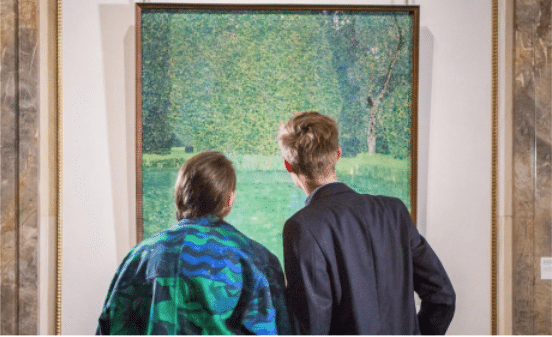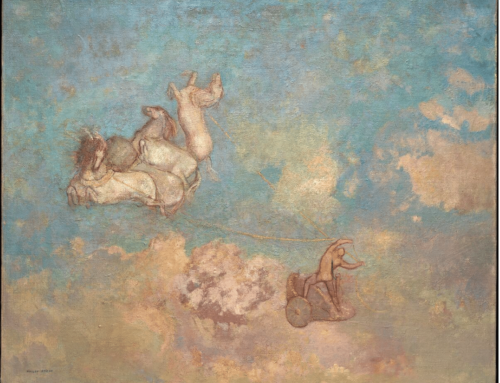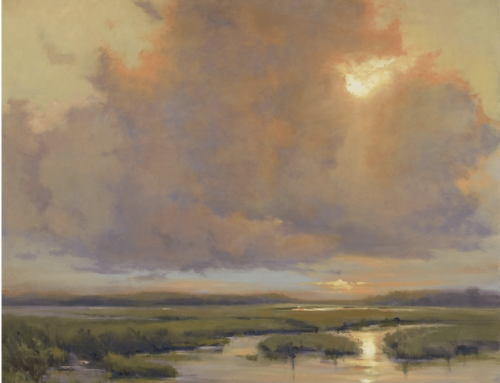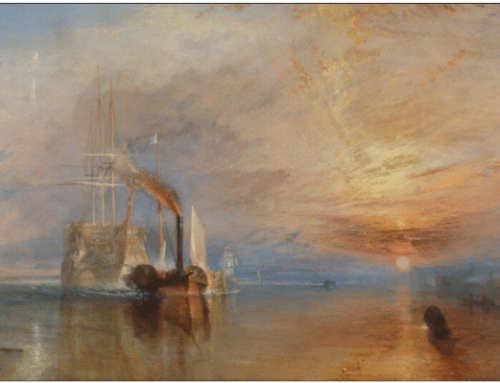Austrian Symbolist painter Gustav Klimt (1862-1918) is well known for his 3/4 life-size fin de siècle paintings of dreamlike women in oil, gold leaf, and other precious metals. The oil-on-canvas painting The Kiss of 1907-08, for example, with added gold leaf, silver, and platinum, remains a beloved emblem of love, reproduced thousands of times on posters, mugs, umbrellas, calendars, scarves, you name it. (Selling merch seems to be how our culture signals that it’s chosen a particular painting for universal admiration.)
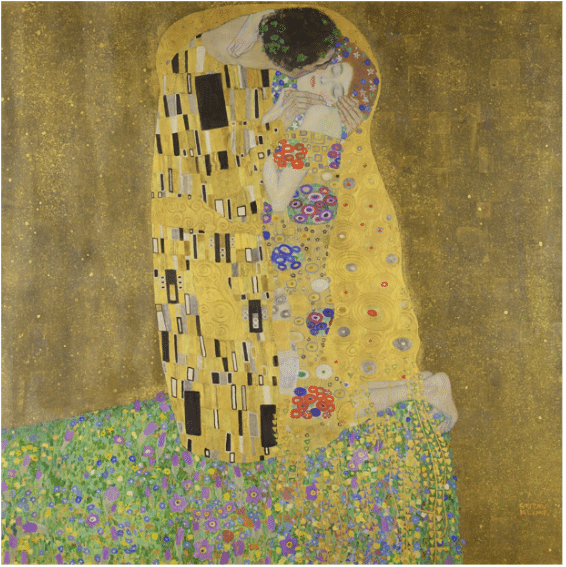
Gustav Klimt, The Kiss, oil and gold leaf on canvas, (71 in x 71 in.) 1907
Or consider Klimt’s Portrait of Adele Bloch-Bauer I (also called The Lady in Gold or The Woman in Gold) of the same period (below). Also influenced by then ultra-modern Art Nouveau and Arts and Crafts movements, it’s the final and considered the most representative of Klimt’s “Golden period” paintings. In turn of the century Vienna, Klimt was THE painter of beautiful women. Critics look back on Klimt’s use of gold to offset his subjects as “underlying the essential erotic ingredient in [Klimt’s] view of the world” coupled with the medium’s ability to conjure a sacred or magical/fairy-tale quality.
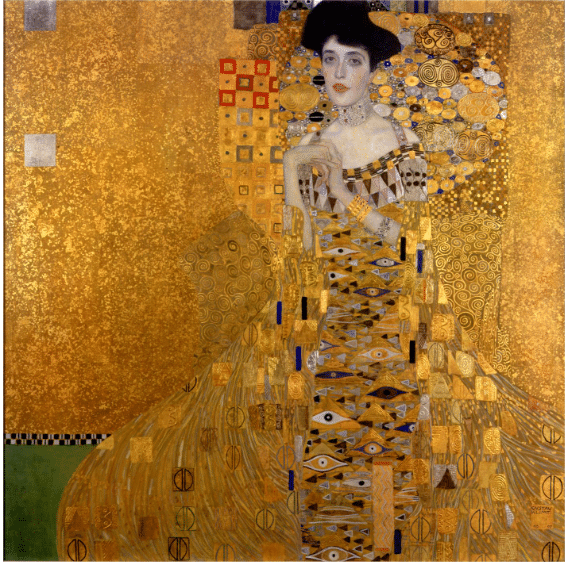
Gustav Klimt, Portrait of Adele Bock-Bauer I, oil d gold leaf on canvas, (55⅛ in × 55⅛ in) 1907
But landscapes make up nearly half of Klimt’s output during the last two decades of his life. Klimt had his own pictorial language, and his landscapes speak it fluently. Lesser known but of major importance, “they lead us to the verry core of his art,” says Klimt scholar Stephan Koja. “Our eyes are directed at the essentials, the purely artistic, unobstructed by theme and content. It becomes apparent that, in these works, Klimt achieved his real greatness.”
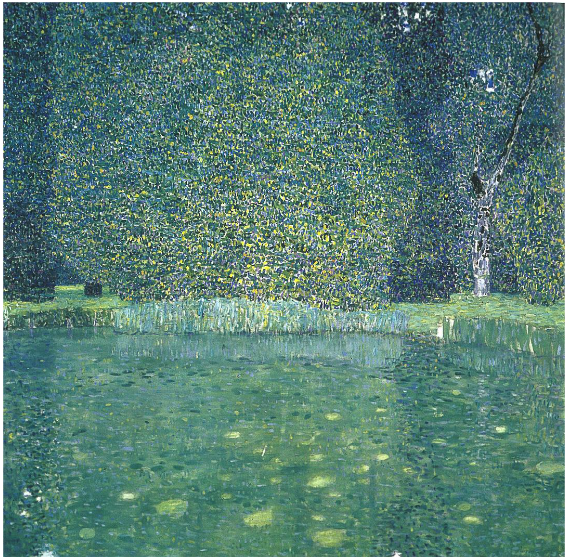
Gustav Klimt, PARK AT KAMMER CASTLE, oil on canvas, 1909
They are almost literally stunning, so intensely and precisely painted are they, and so sparkling with summer light and life.
Klimt knew Friedrich Nietzsche’s theories of art as published in The Birth of Tragedy (1886), where art and beauty are held up as the balancing compensation for life’s potential meaninglessness. Beauty transforms suffering, the philosopher wrote, and in much the same way, Klimt wanted his paintings to provide “salvation through illusion” and to offer the viewer the feeling of “being absolutely engulfed in the beauty of illusion.” (Stephan Koja in Gustav Klimt, Landscapes, Prestel, 2006)
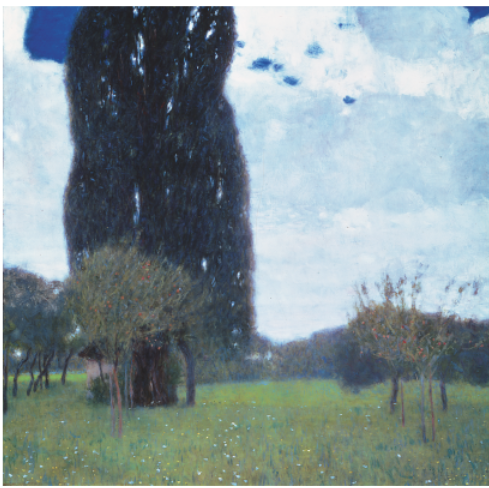
Gustav Klimt, The Large Poplar Tree #1, oil on canvas, 81 x 80 cm. 1900
Klimt applied the same approach to his landscapes that he brought to his portraits. They look different because while Klimt is using the same language, he’s saying different things in either genre. Nonetheless, the aesthetic is the same.
Klimt painted his landscapes for his own pleasure and to make money. They allowed him to deal with purely artistic questions and to test and break more formal boundaries than in his commissions. In them, we find the essence of Klimt’s art: they demonstrate his bold stylistic development, “his coloristic brilliance, precisely detailed pictorial composition, omnipresent sensuality, controlled by the distancing from the object, and the rigid organization of surface.” (Ibid., Landscapes).
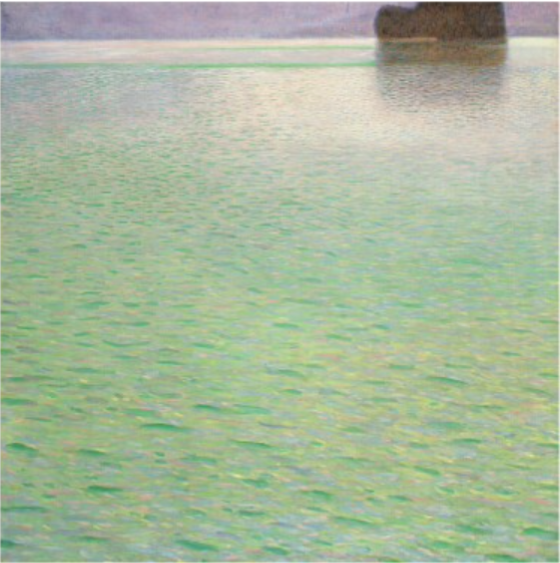
Gustav Klimt, Insel im Attersee, 39.6 x 39.6 in. 1901-1902
Created during Klimt’s summer on Attersee Lake in Austria, this painting (above) shares DNA with Monet’s treatment of water. However, Klimt created the more daringly abstract composition, yielding 90 percent of the (square!) canvas to shimmering broken color. This work recently changed hands in an auction at Sotheby’s in New York City, where it sold for $53.2 million to a private buyer in Japan. First exhibited in 1940, this work ostensibly introduced Klimt’s work to a North American viewership.
It’s among the many landscapes Klimt painted while vacationing at Attersee, including its sister painting below. Following which are several more outstanding examples of Klimt’s landscape work from the same time and place. To my eye, they’re still incredibly fresh and alive more than 100 years after Klimt painted them.
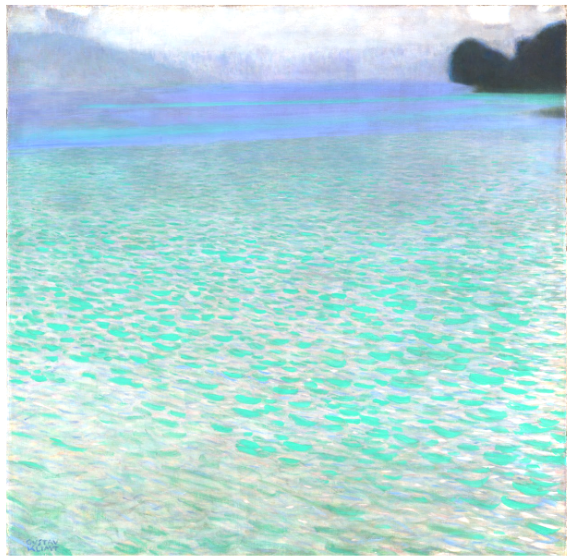
Gustav Klimt, Lake Attersee, c. 40 x 40 in., 1901-1908
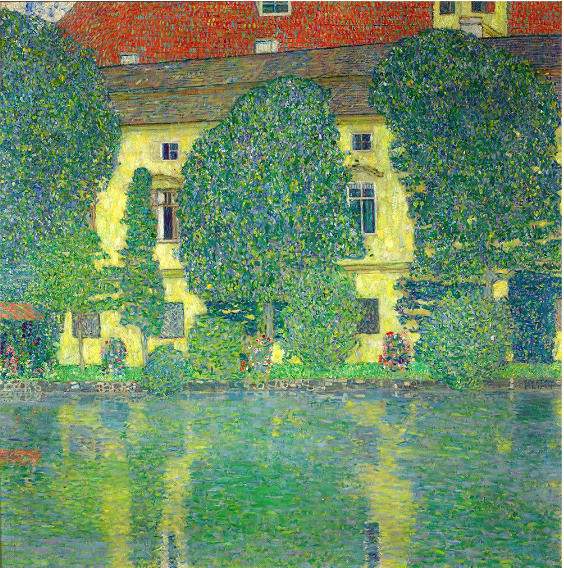
Gustav Klimt, Lake Cottage, c. 40 x 40 in., 1901-1908
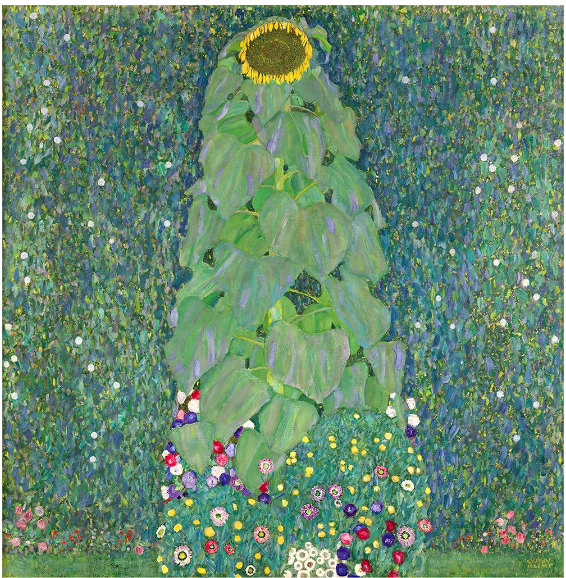
Gustav Klimt, The Sunflower, c. 40 x 40 in., 1901-1908
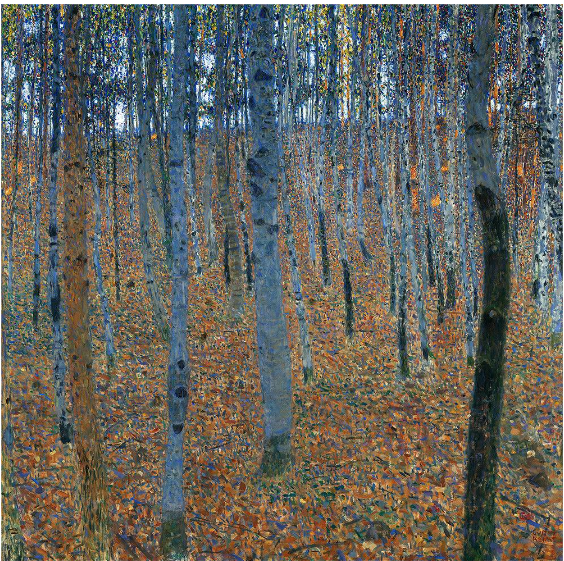
Gustav Klimt, Birch Tree Grove, c. 40 x 40 in., 1901-1908
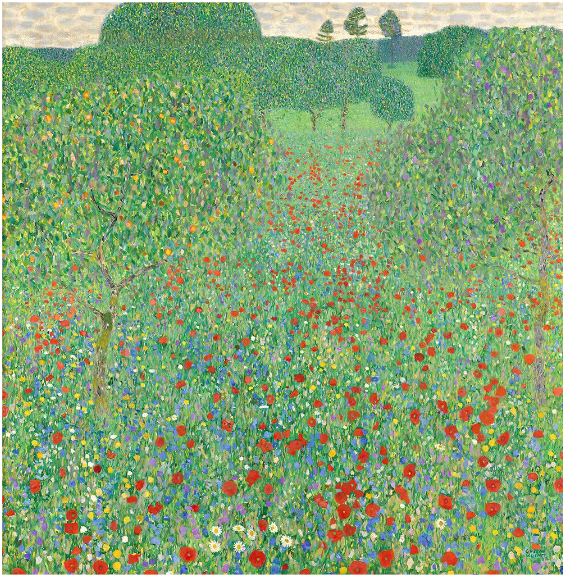
Gustav Klimt, Pear Trees and Poppies, c. 40 x 40 in., 1901-1908

